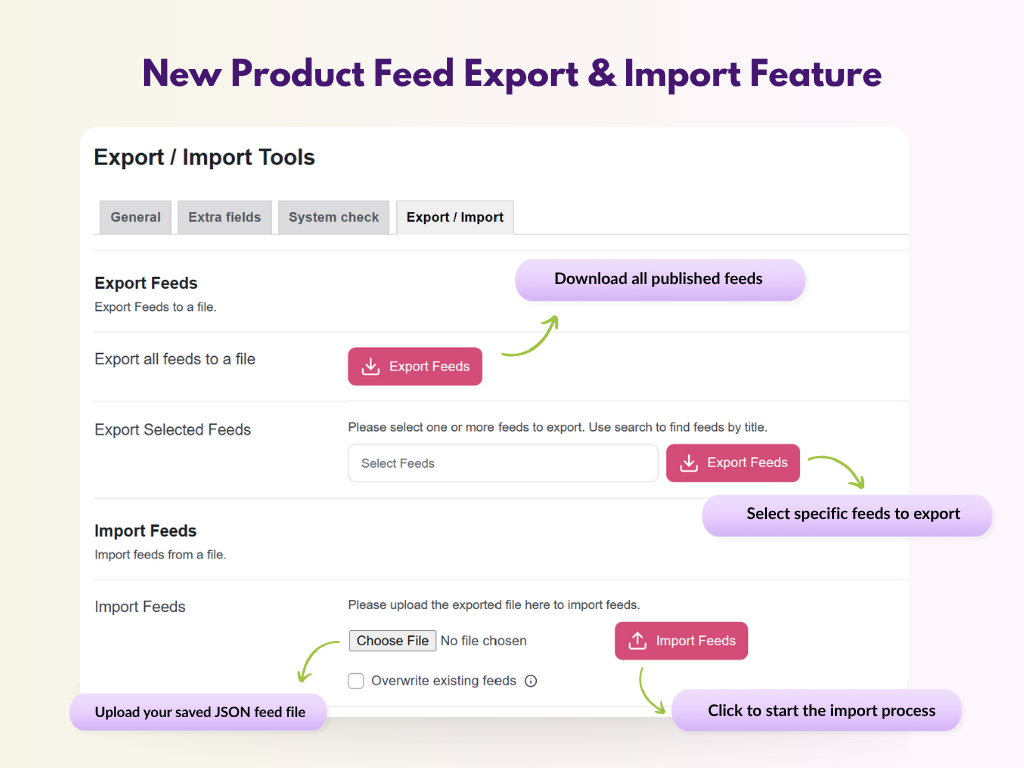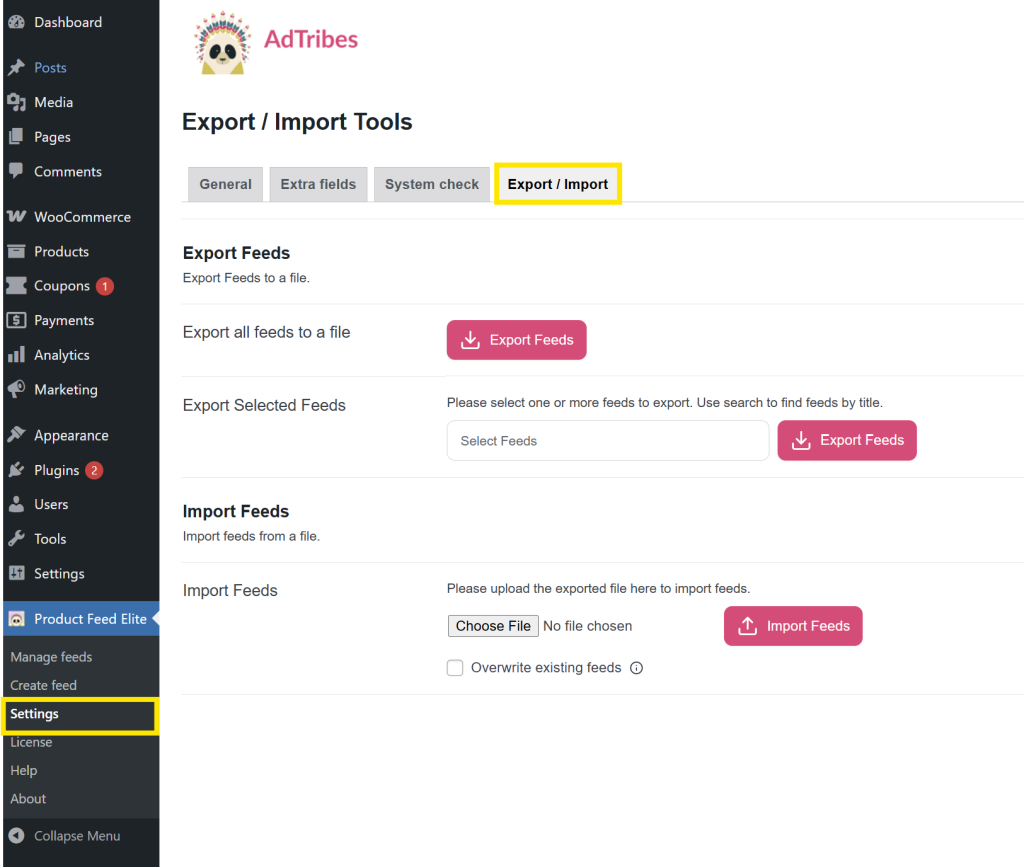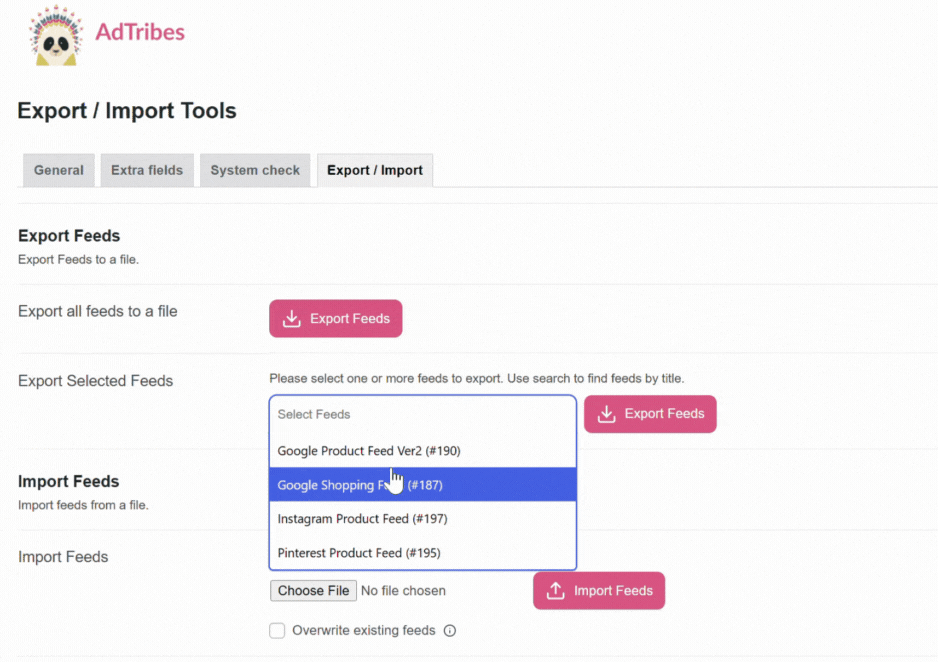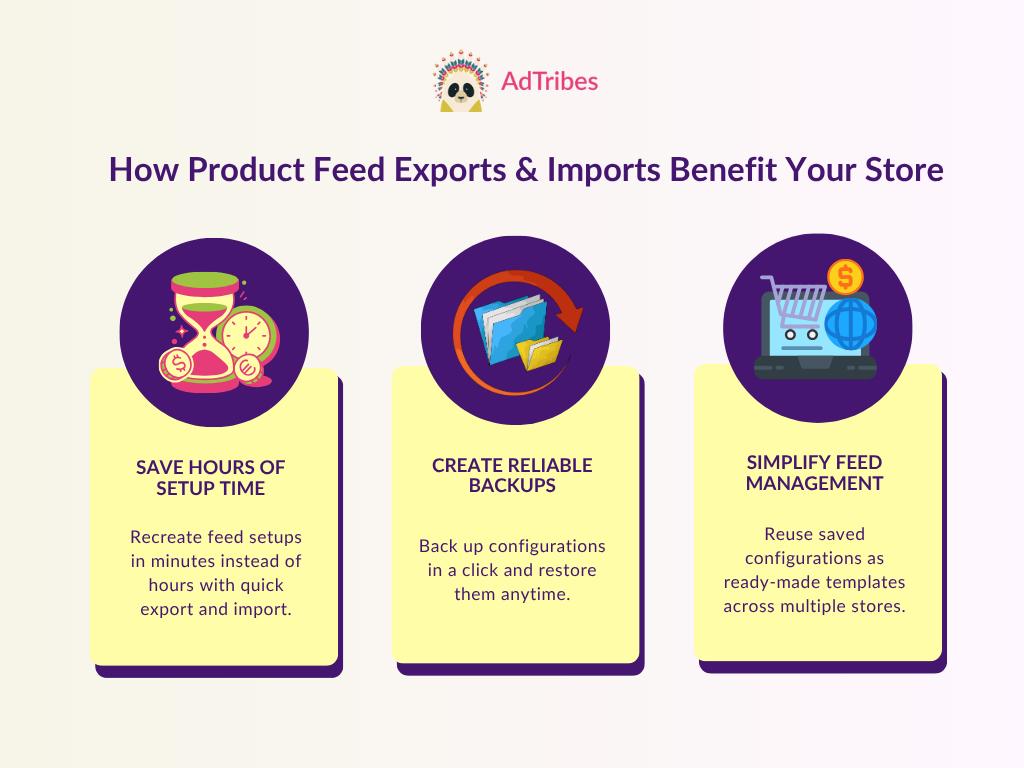
Product feed management just got easier and simpler! 🥳 With our new product feed export and import feature, you can now migrate and back up your feed configurations in just a few clicks. This is a massive time saver for stores managing multiple feeds, switching between staging and live sites, or simply looking to prevent accidental data loss.
In this guide, we’ll break down what this new feature does, how it can benefit your store, and how you can use it to save hours of setup time. This update is here to make your feed management smoother and more scalable.
Let’s go!
- I. Feature Overview: Product Feed Export And Import
- II. How To Export Product Feeds
- III. How To Import Product Feeds
- IV. How Product Feed Exports And Imports Benefit Your Store
I. Feature Overview: Product Feed Export And Import
Managing product feeds across multiple stores or backing up multiple feed configurations can be time-consuming for store owners. This is exactly why we’ve developed the product feed export and import feature!
With this update, you can now export your product feed configuration into a JSON file and upload it to another store or staging site with a few clicks. This makes it easy to move feed setups between sites, back them up before major updates, or reuse them across multiple stores.
Here’s a quick overview:
- Product Feed Export: Lets you export all your feeds at once or select only the ones you need with a searchable multi-select dropdown. The file is downloaded in JSON format for maximum compatibility.
- Product Feed Import: Allows you to restore or upload feed configurations from a JSON file. You also have the option to overwrite existing feeds, which is perfect for updating old setups or syncing feed configurations across different websites.
📝 IMPORTANT NOTE: The product feed export feature is available in both Product Feed Pro (free plugin) and Product Feed Elite, while the import functionality is exclusive to Product Feed Elite users. This means you can start exporting feeds right away, and upgrade anytime to unlock the import feature.
II. How To Export Product Feeds
Exporting your product feeds is quick and easy! To access this new feature, navigate to your WordPress dashboard > Product Feed Pro/Elite > Settings. Then, head to the Export / Import tab.
From here, you can either:
- Export All Feeds: Click the Export Feeds button to instantly download a JSON file containing all your published feeds.
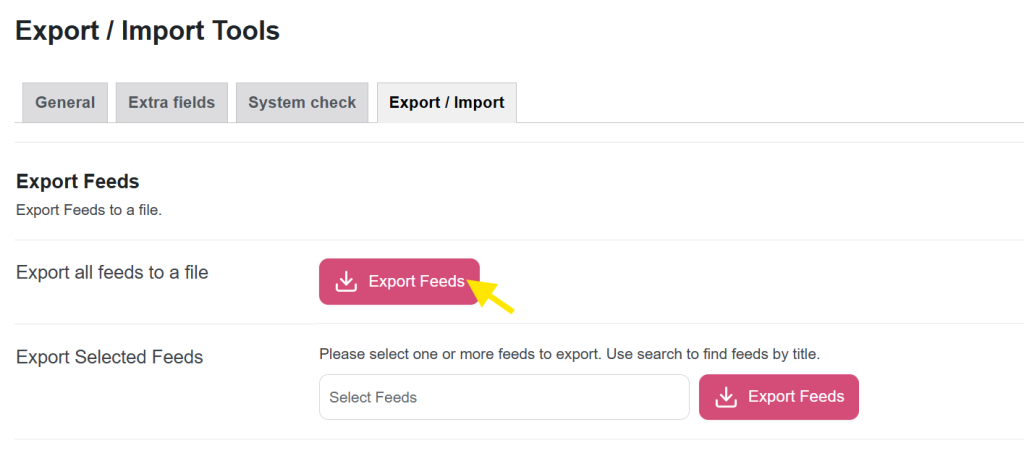
- Export Selected Feeds: Use the multi-select dropdown to pick specific feeds you want to export. Once you’ve made your selection, click Export Feeds.
Your download will automatically start after clicking “Export Feeds.” This file is saved in a JSON format and is fully compatible for backups, migrations, or re-importing later. Pretty neat, right?
🎯 POWER TIP: Consider creating a dedicated folder for product feed backups in your local drive or cloud storage. This will help you stay organized, so you can easily find the latest backups ready in case you need to restore or duplicate your feeds.
III. How To Import Product Feeds
You can find the product feed import feature by navigating to WordPress dashboard > Product Feed Elite > Settings > Export / Import tab. Note that this feature is available for Product Feed Elite users.
Under the Import Feeds section, click the Choose File button and select the JSON file to be imported.
You can also tick the “Overwrite existing feeds” checkbox if you’d like to replace feeds that already exist on your site.
The importer uses each feed’s unique ID to detect duplicates and will replace any matching configurations during the import. Leave it unchecked if you prefer to skip duplicates and add only new feeds.
Click “Import Feeds” to start the product feed import process. You’ll receive a success notification once the import is complete.
And that’s it, your product feeds are migrated! 🥳
IV. How Product Feed Exports And Imports Benefit Your Store
Here are three key ways this update benefits your store:
Save hours of setup time
Manually creating product feeds from scratch entails multiple steps, from setting up filters and rules to mapping fields and double-checking configurations. Doing this repeatedly when setting up a new store or working across different sites can eat up a huge chunk of your time.
With the new product feed export and import feature, you can skip all that and easily recreate your current feed setup. This is a massive time-saver if you’re a store owner managing multiple feeds, or an agency creating product feed setups for different clients.
Create reliable backups
One of the biggest challenges for ecommerce stores is dealing with data loss and unexpected server disruptions. According to industry insights, 30% of businesses experience data loss due to server outages. That’s why having reliable backups for everything (including product feeds) is essential.
The new product feed export and import feature lets you generate a reliable backup of all your product configurations in just a few clicks. This added layer of security gives you confidence to make updates without worrying about losing hours of setup work. If something goes wrong, you can restore your feeds by importing your saved file instead of building everything from scratch.
Simplify product feed management
As your store grows and you list your products in more channels, the number of product feeds you need to manage increases as well. Keeping them consistent across different websites and platforms can be overwhelming.
Our product feed export and import feature streamlines this process by letting you save feed setups as ready-made templates. Reuse your saved configurations and roll them out in different stores in minutes! With AdTribes, you have a central dashboard to manage your product feeds, making it easier to stay organized even as your business scales.
Wrapping Up
Our newest product feed export and import feature simplifies product feed management on a whole new level. Now, you can easily back up and migrate your product feed configurations in just a few clicks! This gives you better control, flexibility, and peace of mind when managing multiple stores and protecting your setups from unexpected changes.
In this overview, we learned:
- Overview of the product feed export and import feature
- How to export product feeds
- How to import product feeds
- Benefits of this new feature for your store
We hope this guide helped you out! Do you have any questions about this new feature? Let us know in the comments. Always happy to help. ☺️
